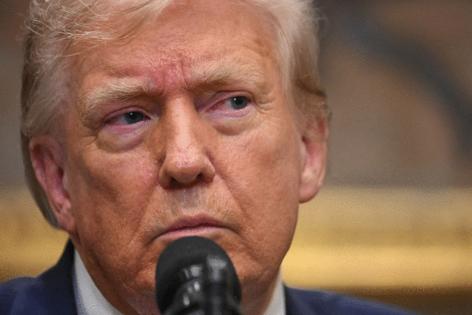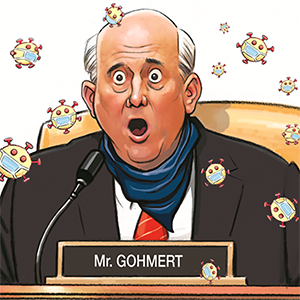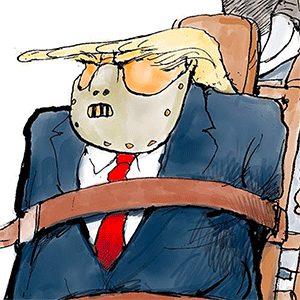Trump sets 10% minimum global tariff, raises Canada rate to 35%
Published in News & Features
WASHINGTON — President Donald Trump announced a slew of new tariffs, including a 10% global minimum and 15% or higher duties for countries with trade surpluses with the U.S., as he forged ahead with his effort to reshape international commerce.
The baseline rates for many trading partners remain unchanged from the duties Trump imposed in April, which will come as a relief to investors after the president had previously said it could go higher. Yet his move to raise tariffs on Canadian goods to 35% threatens to inject fresh tensions into an already strained relationship.
Market reaction was muted in early Asian trading with the Canadian dollar and the South African rand little changed, while the Thai baht held a small decline. The Swiss franc edged lower after the nation’s products were hit with a 39% charge, one of the few that saw the rate go up.
Most of the rates will take effect after midnight on Aug. 7 to allow time for U.S. Customs and Border Protection to make necessary changes to collect the levies. Trump signed the directive just hours before his prior Aug. 1 deadline for higher tariffs to kick in on dozens of trading partners.
Equities markets are largely expected to take the announcement in stride as some trade uncertainty has now dissipated, but gains will still be capped, said Shane Oliver, a Sydney-based chief investment officer at AMP Ltd.
“The reality is that we’re still going to see higher tariff than pre-Liberation day and we’ll start to see some economic impact of that in the months ahead. There’s still uncertainty about China, Mexico has been delayed by another 90 days and details around sectoral tariffs are also yet to come,” Oliver said.
The announcement brings to a close, at least for now, months of wait-and-see about how Trump would set his country-based tariffs, which he billed as the centerpiece of his plan to shrink trade deficits and revive American manufacturing.
Trump twice delayed his so-called reciprocal tariffs, first announced in April, to allow time for negotiations, first after markets panicked and then as foreign governments bargained to get better terms from the U.S.
In the end, imports from about 40 countries will face the new 15% rate and roughly a dozen economies’ products will be hit with higher duties, either because they reached a deal or Trump sent them a letter unilaterally setting import taxes. The latter group has the highest goods-trade surpluses with the U.S.
Some of those were expected, such as a 25% levy on Indian exports that Trump announced this week on social media. Others included charges of 20% on Taiwanese products and 30% on South African goods. Thailand and Cambodia, two countries that were said to have struck a last-minute deal, received a 19% duty.
Other details are still forthcoming, including so-called “rules of origin” to decide which products are transshipped, or routed through another country, and thus would face higher rates, a senior U.S. official said. A decision will be made in the coming weeks, according to the official.
In a separate order, Trump followed through on his threat to hike tariffs on exports from Canada, one of the U.S.’s largest trading partners, from 25%. That change excludes goods that are covered under the North American trade pact he negotiated in his first term.
That stood in contrast to the 90-day extension Mexico received to negotiate a better agreement.
The lower 10% rates are expected to apply to a wide range of mostly smaller- and medium-sized economies that Trump showed little interest in bargaining with.
The senior U.S. official said there is no date yet when revised auto tariff rates would be implemented. Trump has announced deals with the European Union, Japan and South Korea to lower duties on their vehicle exports to 15% from the general rate of 25%.
One big exception from this week’s deadline is China, which faces an Aug. 12 deadline for its tariff truce with the U.S. to expire. The Trump administration has signaled that is likely to be extended. No final decision has been made but the recent U.S.-China talks in Stockholm were positive, the official said.
_____
(With assistance from Derek Wallbank, Jennifer A. Dlouhy and Swati Pandey.)
_____
©2025 Bloomberg L.P. Visit bloomberg.com. Distributed by Tribune Content Agency, LLC.







Comments